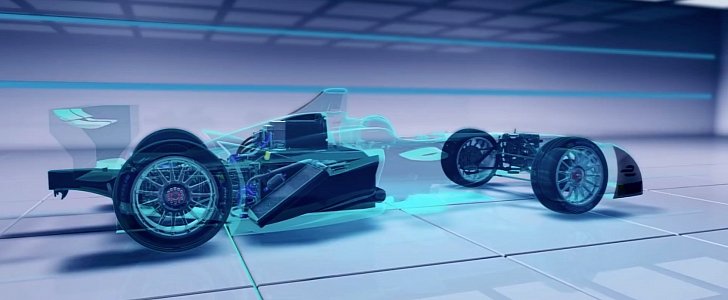It’s OK if you secretly love the Formula-E but you’re ashamed to acknowledge it. It’s peer pressure, we get it, we’ve all succumbed to that at least once in our lifetime.
Hardcore fans of the Formula One and motorsports in general will look down upon an all-electric version of the most expensive championship in the world, but it’s their loss. With the Big Circus becoming more boring with every season, the Formula-E provides plenty of entertainment to make up for the fact that the race cars themselves sound like a blender running empty.
There’s a very important reason behind this increased competitiveness that can be found in Formula-E. The FIA knows it, the people calling shots in Formula One know it, and the fans are well aware of it as well: it’s the cars.
There’s nothing special about them in particular, just that there are some limitations - enough to make sure there aren’t too many differences between the cars, but also enough to allow teams to customize their vehicles to some extent - that level the playing field. And with cars so similar (yet not identical), it all turns into a battle of skills between the pilots.
The video down below takes off the car’s body panels and reveals what’s underneath, explaining the parts that are identical to every team - such as the 200 kg (roughly 440 lbs) 28 kWh battery pack - and those that are not.
Formula-E single-seaters are also limited in power, being allowed to develop a maximum of 200 kW during qualifying and 170 kW in the actual race. But this is where the restrictions end. The inverter, motor, and transmission are all left for each team to customize as they see fit, allowing them to tinker with the way that limited amount of power is delivered to the wheels.
But this competition is more about strategy than any other. After a first season where the cars were absolutely identical, the teams are now starting to make the most of what they learned during that time, coming up with new ways of outperforming their opponents. With a limited amount of energy available, the drivers have to mind their consumption, as well as their lap times. This adds a new dimension to racing, as does the car swap (criticized by some) in the middle of the race.
The current season is almost half-way through, with the next race in Mexico being the fifth out of ten, and even though there are a few favorites, plenty of drivers will feel there’s still everything to fight for.
There’s a very important reason behind this increased competitiveness that can be found in Formula-E. The FIA knows it, the people calling shots in Formula One know it, and the fans are well aware of it as well: it’s the cars.
There’s nothing special about them in particular, just that there are some limitations - enough to make sure there aren’t too many differences between the cars, but also enough to allow teams to customize their vehicles to some extent - that level the playing field. And with cars so similar (yet not identical), it all turns into a battle of skills between the pilots.
The video down below takes off the car’s body panels and reveals what’s underneath, explaining the parts that are identical to every team - such as the 200 kg (roughly 440 lbs) 28 kWh battery pack - and those that are not.
Formula-E single-seaters are also limited in power, being allowed to develop a maximum of 200 kW during qualifying and 170 kW in the actual race. But this is where the restrictions end. The inverter, motor, and transmission are all left for each team to customize as they see fit, allowing them to tinker with the way that limited amount of power is delivered to the wheels.
But this competition is more about strategy than any other. After a first season where the cars were absolutely identical, the teams are now starting to make the most of what they learned during that time, coming up with new ways of outperforming their opponents. With a limited amount of energy available, the drivers have to mind their consumption, as well as their lap times. This adds a new dimension to racing, as does the car swap (criticized by some) in the middle of the race.
The current season is almost half-way through, with the next race in Mexico being the fifth out of ten, and even though there are a few favorites, plenty of drivers will feel there’s still everything to fight for.


